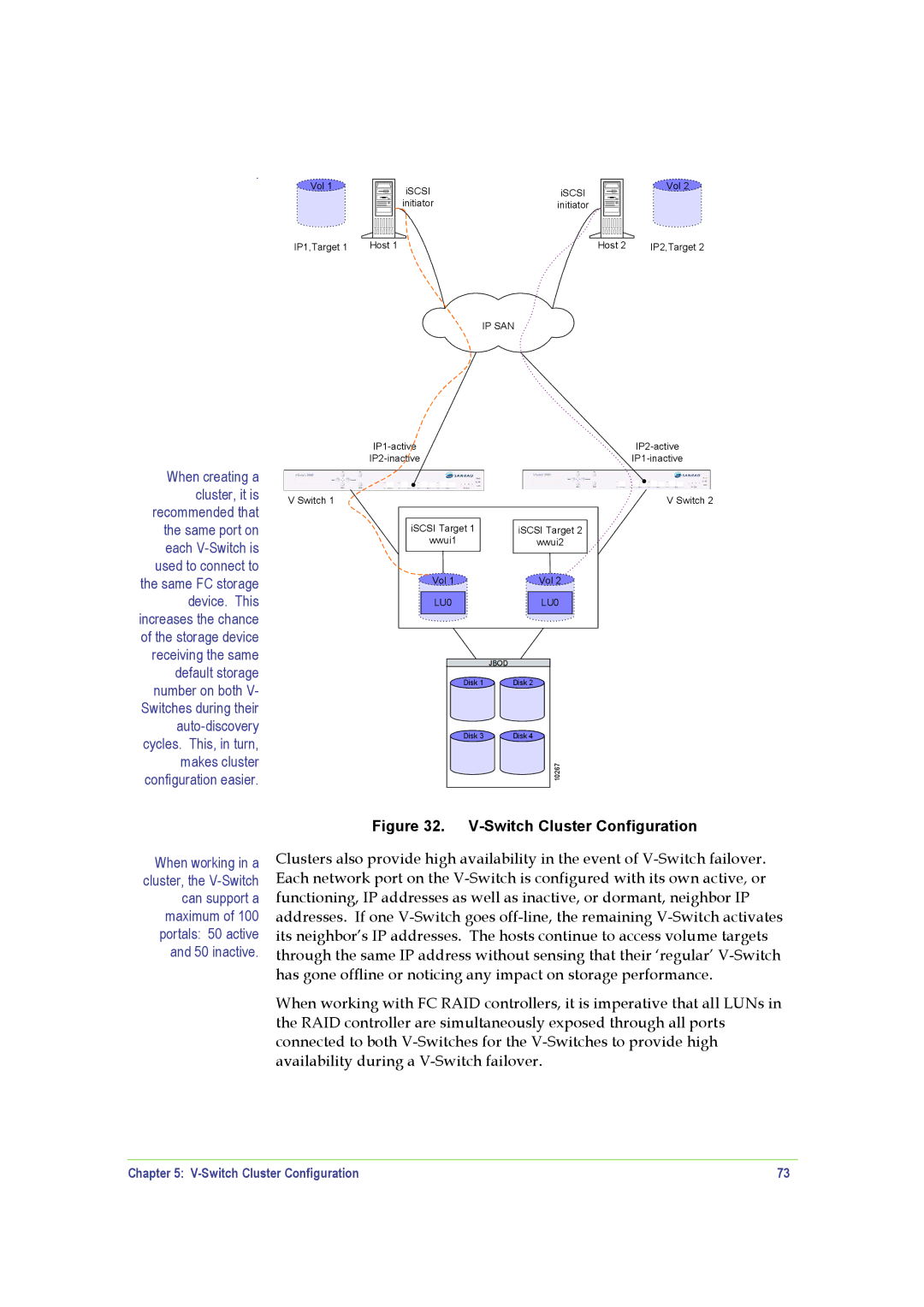
.
Vol 1 | iSCSI | iSCSI | Vol 2 |
|
| ||
| initiator | initiator |
|
IP1,Target 1 | Host 1 | Host 2 | IP2,Target 2 |
Cloud
IP SAN
When creating a cluster, it is recommended that the same port on each
V Switch 1
iSCSI Target 1
wwui1
Vol 1
LU0
V Switch 2
iSCSI Target 2
wwui2
Vol 2
LU0
default storage number on both V- Switches during their
| JBOD |
Disk 1 | Disk 2 |
Disk 3 | Disk 4 |
| 10267 |
When working in a cluster, the
Figure 32. V-Switch Cluster Configuration
Clusters also provide high availability in the event of
When working with FC RAID controllers, it is imperative that all LUNs in the RAID controller are simultaneously exposed through all ports connected to both
Chapter 5: | 73 |
